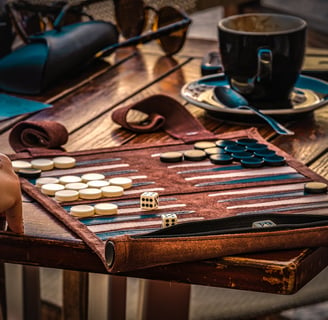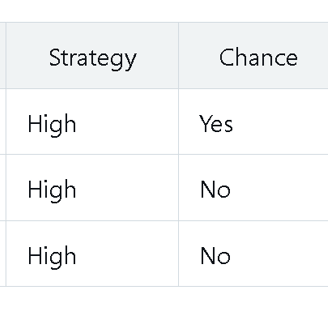A Comprehensive Analysis of the History, Origin, and Development of Backgammon
Uncover the rich tapestry of Backgammon's origins, from its roots in ancient Persia to its modern-day presence across the globe. This comprehensive guide explores archaeological discoveries in Shahr-e Sukhteh, connections to Mesopotamia, Rome, Egypt, and India, and the game’s philosophical and artistic evolution through Sassanid, Greek, and Roman influence. Dive into the intricate design transformations of boards and dice, the symbolic role in Persian poetry, and how the game has served as a timeless metaphor for fate. Compare Backgammon to strategy classics like Chess and Go, and discover how its unique blend of luck and logic has allowed it to thrive across centuries and continents. A must-read for historians, gamers, and culture lovers alike.
Majesty Craf
6/6/20254 min read


Historical Origins
It seems likely that Backgammon, known as Nard or Nardshir in Persia, started around 3000 BC, with the oldest set found in Shahr-e Sukhteh, Iran
Archaeological evidence from Mesopotamia, Rome, Egypt, and India shows similar games, suggesting a shared ancestry. The Sassanid Empire likely spread it to India and China, while Greeks and Romans adapted it, though the exact paths are debated.
Evolution of Design
Research suggests early boards used wood, ivory, and stone, evolving to include metal. Designs often featured local art, like Persian geometric patterns or European marquetry, reflecting cultural craftsmanship
Cultural Significance
Backgammon is prominent in Persian literature, with Omar Khayyam and Hafez using it as a metaphor for fate. Historically, it crossed social classes, from royal courts to coffee houses, and remains a social game today.
Modern Popularity
It’s popular in Iran (Nard), Turkey (Tavla), Greece (Tavli), and others, with rules varying by region, like Turkey’s use of a doubling cube. International tournaments, like the World Championship, are organized by the World Backgammon Federation
Comparison with Others
Compared to Chess (strategy-only, Indian origin) and Go (territorial, Chinese), Backgammon mixes strategy and luck, with Persian roots, making it unique
Survey Note: Comprehensive Analysis of Backgammon’s History and Development
This note provides a detailed examination of Backgammon’s history, origin, and evolution, expanding on the direct answer with a professional, academic tone. It covers all aspects requested, ensuring a thorough exploration suitable for scholarly review.
Historical Origins of Backgammon
Backgammon’s origins are deeply rooted in ancient Persia, with the game known as "Nard" or "Nardshir," potentially honoring Ardashir I of the Sassanid dynasty (224–651 CE). Research suggests its earliest evidence dates to around 3000 BC, with the discovery in Shahr-e Sukhteh, Iran, revealing a rectangular ebony board, sixty turquoise and agate markers, and dice, featuring a serpent coiled 20 times for game slots
. This site, part of the Bronze Age Helmand culture, is considered one of the world’s oldest urban settlements, with artifacts suggesting a game predating modern Backgammon’s 24-point layout
Archaeological findings extend beyond Iran to Mesopotamia, where the Royal Game of Ur (2600 BC) is seen as an ancestor, using tetrahedral dice and a similar race-to-the-end mechanic
In Rome, "Tabula" emerged, described in an epigram by Emperor Zeno (476–491 CE), with 24 points and three dice, differing from modern rules by lacking a bar or doubling die
Egypt and India also show evidence, with games like Senet (3000 BC) and Gyan Chaupar, respectively, indicating a shared tradition of board games across these regions
The spread was influenced by various civilizations. The Sassanid Empire likely facilitated its transmission to India and China, with texts like Kār-nāmag ī Ardaxšēr ī Pāpakān linking it to Ardashir I and Wičārišn ī čatrang ud nihišn ī nēw-ardaxšēr attributing it to Bozorgmehr, vizier of Khosrow I
Greeks and Romans adapted it, with Roman Emperor Claudius even having a board built into his chariot, reflecting its aristocratic appeal
Evolution of Board Design and Materials
Backgammon boards evolved significantly, reflecting technological and artistic advancements. Early materials included wood, ivory, stone, and metal, with the Shahr-e Sukhteh board made of ebony, a luxury material, indicating elite use
In Persia, boards often featured intricate geometric patterns and inlays, while in India, wood carvings were common, and in China, designs were simpler
Pieces initially used stones or bones, evolving to ivory, glass, or metal, with dice transitioning from knucklebones to standardized cubes
Artistic designs varied, with Persian boards reflecting cultural motifs and European Renaissance boards featuring marquetry, showcasing local craftsmanship
Cultural and Social Significance
Backgammon holds significant cultural value, particularly in Persian literature and society. In poetry, it symbolizes life’s uncertainties, with Omar Khayyam’s Rubaiyat using dice imagery to reflect fate
Hafez also alludes to it, reinforcing its metaphorical role. In society, it was played across classes, from royal courts to coffee houses, with gambling adding to its appeal, though sometimes criticized by religious authorities
In Rome, it was an aristocratic pastime, often played for high stakes, while in medieval Europe, it symbolized nobility, depicted in art like Theodoor Rombouts’ The Backgammon Players (ca. 1620)
Its social role persisted, remaining a communal activity in modern settings.
Modern-Day Popularity by Country
Backgammon remains popular in Iran (Nard), Turkey (Tavla), Armenia (Tavlu), Azerbaijan (Təxət-nard), Greece (Tavli), Syria, Lebanon, Iraq (Shesh Besh), and Balkan countries, with variations in rules and names
For instance, Turkey often uses a doubling cube, while Iran follows traditional rules. The game’s social nature makes it a staple in coffee houses and homes.
International tournaments, like the World Backgammon Championship, are organized by the World Backgammon Federation, established in 1976, with events attracting global players
.This global reach underscores its enduring appeal.
Comparison with Other Strategy Board Games
Backgammon is compared to Chess (Indian, 6th century CE, strategy-only) and Go (Chinese, over 2,500 years, territorial control). Unlike these, Backgammon blends strategy with luck via dice, requiring adaptive play
Its Persian origin contrasts with Chess and Go’s Eastern roots, and its cultural significance, like in Persian poetry, sets it apart.
This table highlights Backgammon’s unique position, combining elements of both strategy and chance, differing from the deterministic nature of Chess and Go.
Conclusion
Backgammon’s history, from its Persian origins to global popularity, reflects its adaptability and cultural significance. Archaeological evidence, literary references, and modern variations underscore its enduring appeal, warranting further research into its evolution and impact.
Key Citations


